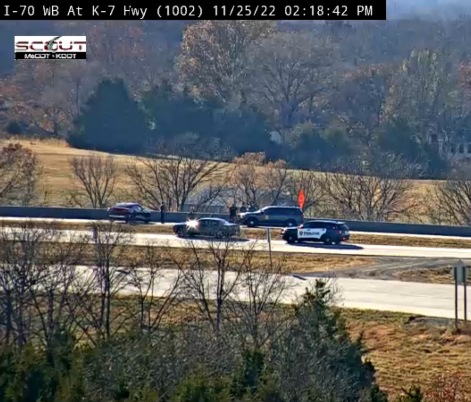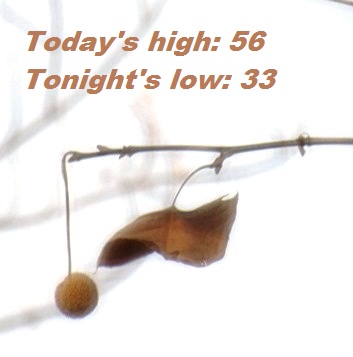
Crash reported on I-70 to K-7

Serving Kansas City (Wyandotte County) Kansas for over 50 years!

by Tim Carpenter, Kansas Reflector
Topeka — Physicians and public health researchers anticipate a surge in COVID-19 infection during the holiday months would complicate the medical response to rising prevalence of flu and a tricky influenza virus.
The trifecta of COVID-19, flu and respiratory syncytial virus, or RSV, could lead to escalation of health problems and hospitalizations this winter as precautionary measures such as vaccination, masking and isolation waned during 2022. In the winter of 2021-2022, Kansas experienced a surge in Delta and Omicron variants of COVID-19.
“We’re just kind of keeping our fingers crossed,” said Dana Hawkinson, director of infection control at the University of Kansas Health System.
Hawkinson said there was a two- to four-week lag between infection and hospitalization for COVID-19, and urged Kansans to be vaccinated and boosted to shield themselves from the most dangerous aspects of the virus.
Since COVID-19 spread into Kansas in March 2020, the state has documented nearly 900,000 cases. The actual number is thought to be higher because testing for the virus has dropped off. Eighteen counties in Kansas reported more than 10,000 cases of COVID-19, with Johnson County’s 171,000 cases and Sedgwick County’s 164,000 cases contributing more than one-third of the state’s total.
The Kansas Department of Health and Environment’s latest report showed 9,657 fatalities in Kansas had been associated with COVID-19 during the pandemic. The Kansas figure incorporated 2,613 deaths in 2022.
Risks of reinfection
Nathan Bahr, associate professor of infectious diseases at the University of Kansas Medical Center, said there was reason to be concerned about research findings indicating that people contracting COVID-19 multiple times were more susceptible to erosion of organ function. He compared it to someone who repeatedly injured a leg and eventually suffered a fracture.
“The more times that happens, the more risk you are for losing function,” he said.
Washington University in St. Louis said analysis of medical records of 5.4 million Veterans Administration patients suggested individuals who contracted COVID-19 more than once were twice as likely to have a heart attack compared to those who caught the virus once. In addition, the researchers said kidney, lung and gastrointestinal health risks were greater among those infected multiple times.
Amber Schmidtke, chair of natural sciences and mathematics at University of Saint Mary in Leavenworth, said the U.S. Centers for Disease Control and Prevention placed Kansas in the second-highest category of five categories in terms of the incidence of influenza not requiring hospitalization. The influenza-like symptoms factoring into the CDC analysis were fever, cough and sore throat.
The CDC produced a color-coded map that placed Kansas in the “high” level and Missouri in the “moderate” range on influenza. Flu-like symptoms were the highest in the states of South Carolina, Alabama, Tennessee and Virginia.
“This year the intensity is so high, especially in the South, that the CDC had to add a new color to the very high category,” Schmidtke said on the KU Health System’s broadcast.
She recommended people get both a flu shot and COVID-19 booster. However, there is no vaccine for RSV available in the United States.
Sewer water sleuthing
Marc Johnson, a professor of microbiology at the University of Missouri and a researcher with Missouri’s wastewater program to track the shifting nature of COVID-19, said the ability to detect emerging strains of the virus had been refined in the past two years. The holiday season is an opportune moment for the virus to spread and evolve with people in confined spaces, he said.
“Last year and the year before it was right about now where we started to see lineages. We started to see the numbers go up,” Johnson said.
He said the Delta surge and emergence of Omicron produced a “rough winter.”
“Fortunately,” Johnson said, “we’re getting a lot of new variants and none of them are doing what Delta did or what Omicron did. With Delta, this was really amazing, because we could see it moving through the state.”
In response to a question about whether heavy rain led to misleading conclusions about concentration of COVID-19 in wastewater samples, Johnson said the solution was to also test for presence of caffeine. The numbers can be compared to routine presence of the component of coffee, he said.
His research partner in the COVID-19 testing, Chung-Ho Lin of the University of Missouri’s agriculture college, said sewage was an important resource for assessing the health of a community.
“Wastewater never lies,” Lin said. “Give us 15 milliliters of water, and we can tell you a lot of stories.”
Kansas Reflector stories, www.kansasreflector.com, stories may be republished online or in print under Creative Commons license CC BY-NC-ND 4.0.
See more at https://kansasreflector.com/2022/11/24/kansas-health-experts-monitoring-covid-19-flu-and-rsv-trifecta-as-holiday-season-arrives/

Today’s weather will be sunny and warmer, according to the National Weather Service.
Temperatures may hit 56 this afternoon, with a low of 33 tonight, the weather service said. Showers are possible Saturday through Saturday night.
Today will be sunny, with a high near 56 and a north wind around 6 mph becoming calm in the afternoon, the weather service said.
Tonight, it will be clear, with a low of 33, and a calm wind becoming south southwest around 5 mph, according to the weather service.
Saturday, there is a 20 percent chance of showers after noon, with a high near 53, the weather service said. A light and variable wind will become 5 to 9 mph in the morning.
Saturday night, there is a 90 percent chance of showers, with a low of 38, according to the weather service. An east wind of 5 to 13 mph will become north northwest after midnight. Winds may gust as high as 22 mph. Between three-quarters and one inch of rain is possible.
Sunday, it will be cloudy through mid-morning, then gradual clearing, with a high near 47, the weather service said. A north northwest wind of 7 to 14 mph will gust as high as 22 mph.
Sunday night, it will be mostly clear, with a low of 29, according to the weather service.
Monday, it will be sunny, with a high near 52, the weather service said.
Monday night, it will be partly cloudy, with a low of 42, according to the weather service.
Tuesday, it will be mostly sunny, with a high near 57, the weather service said.
Tuesday night, it will be partly cloudy with a low of 26, according to the weather service.
Wednesday, it will be partly cloudy, with a high near 38, according to the weather service.
Wednesday night, it will be mostly clear, with a low of 23, according to the weather service.
Thursday, it will be sunny, with a high near 44, the weather service said.